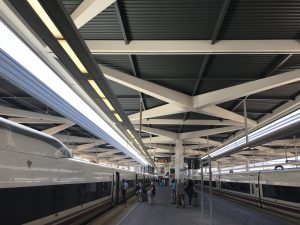 The European Commission has presented a transport package of guidelines on how to safely and gradually restore passenger transport by air, rail, road and waterways. This will help Member States to lift the travel restrictions and will allow tourism sector revival.
The European Commission has presented a transport package of guidelines on how to safely and gradually restore passenger transport by air, rail, road and waterways. This will help Member States to lift the travel restrictions and will allow tourism sector revival.
“We aim to create safe conditions in every mode of transport, to the extent possible, both for people traveling and transport workers. As we re-establish connectivity, these guidelines will provide authorities and stakeholders a standard framework. Our priority is to restore mobility as soon as possible, but only with clear provisions for safety and health,” Commissioner for Transport, Adina Vălean, said.
The Commission’s Tourism and Transport package includes an overall recovery strategy, a common restore approach for free movement, a framework to support the gradual re-establishment of transport services and some criteria to restore tourism activities and reopen businesses.
The transport package of guidelines also include indications on the use of personal protective equipment such as face masks and on adequate protocols in case passengers present coronavirus symptoms. The guidelines also make recommendations for each mode of transport and call for coordination among Member States in light of re-establishment of gradual connections between them.
The European tourism contributes to 10% of EU GDP and has made the EU the world’s leading tourism destination, with 563 million international arrivals and 30% of global receipts in 2018. During an average summer season (June-August period) EU residents make 385 million tourism trips and spend EUR 190 billion.
The practical guidance to ensure safe transport services for passengers in the context of coronavirus pandemic includes measures for each transport mode.
To resume rail passenger transport services, clear measures need to be communicated, a strong coordination between the Member States is essential, while passengers must be responsible for their behaviour.
Although there is a number of measures in place which were implemented starting the coronavirus outbreak, they can be retained and adapted. There are six such measures highlighted by the EC including the application of distancing obligations on trains where needed, mandatory seat reservations must be implemented by the operators which also should make use of on-board passenger counting systems for commuter and suburban trains. The EC also recommends the implementation of passenger flow management at stations, an incentivized off-peak hour travel (by adjusted pricing principle or flexible working hours to avoid crowding in commuter trains). To avoid that passengers have to touch door handles or buttons, doors should be opened at each stop either automatically or remotely by the driver.
ERA is ready to play a key role to ensure sharing of best practices, while Shift2Rail JU is exploring the possibilities to develop new apps based on anonymized and aggregated data, to understand crowding at stations, which could also benefit public transport.
Share on:



